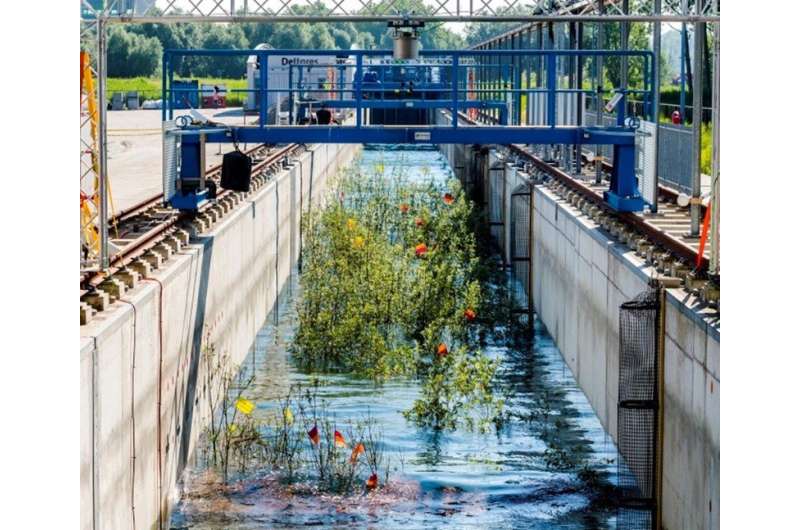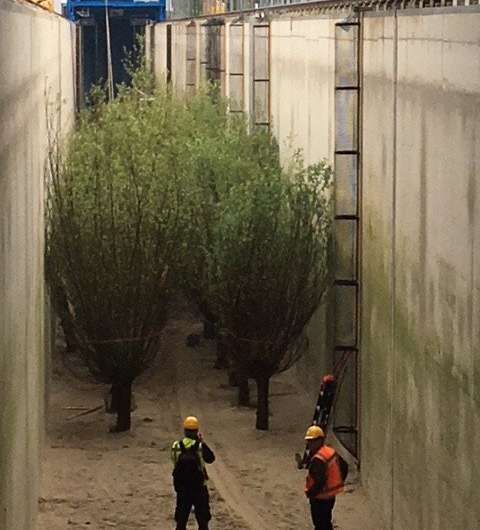Trees outside the dyke well-suited for dampening waves

Research by TU Delft, Deltares and NIOZ Royal Netherlands Institute for Sea Research has revealed that trees can clearly dampen waves. The trees can also withstand high waves without trouble. Planting trees in front of dykes could therefore reduce the dyke elevation required.
In 2018, the researchers constructed a forty-meter-wide wood of pollard willows in the Delta Flume at Deltares, the largest wave flume in the world. They subsequently released waves reaching maximum heights of 2.5 meters. The analysis of the measurements revealed that the trees attenuated the height of the waves by up to 22% and that the trees themselves remained intact at this wave height.
"The aim of the experiment was to test the entire flood defense; a wood with a dyke behind it," explains project leader Bas Hofland from TU Delft. There has previously been little quantitative evidence about the influence of trees on waves, even though the potential effect appeared to be large: "Although there is a lot of talk about using nature in flood defenses, this subject is hardly being investigated. Trees can dampen waves, but by how much? That is not yet clear."
The research project WOODY, which received funding in 2019 via the NWO Open Technology Programme, focuses on broadening knowledge about hybrid flood defenses. These combine nature and a hard dyke. The research is meant to lead to better computer models that can predict the attenuating effect of trees on waves.

Considerable cost savings
More than 1 billion euros is spent annually on water safety in the Netherlands. The dykes are periodically elevated, says Hofland. A dyke can be rejected if it is just a few decimetres too low. "If we could keep the waves lower, the dyke elevation required would be reduced. Furthermore, if we can limit the height of a wave to 50 cm, we could retain a green dyke with grass instead of having to harden the dyke. However, a hard dyke is necessary if the waves surpass one meter in height. Reducing the height of the waves by just a few decimetres could therefore tip the scales. However, it then becomes vital to know the extent of the effect of the trees."
Hofland estimates there are about 300 kilometers of dykes in the Netherlands where vegetation could be placed in front of the dyke, although he expects that it will not be possible to use the concept everywhere. "Using trees would quickly save an awful lot of money. Not having to heighten just one kilometer of dyke easily saves millions of euros in costs." The locations concerned are flood meadows along Dutch rivers.
More research is needed to determine whether using trees for flood defenses works with respect to water safety while at the same time ensuring that the nature value of the wood remains high. Therefore, one of the next steps within WOODY is a field study in a real wood to see whether the idea works at that location in the case of flooding. In the current research project, Hofland hopes to establish whether the concept works and how this can be determined using computer models. Ultimately, the research should lead to a set of design rules to design hybrid flood defenses that are just as robust as hard defenses.
















